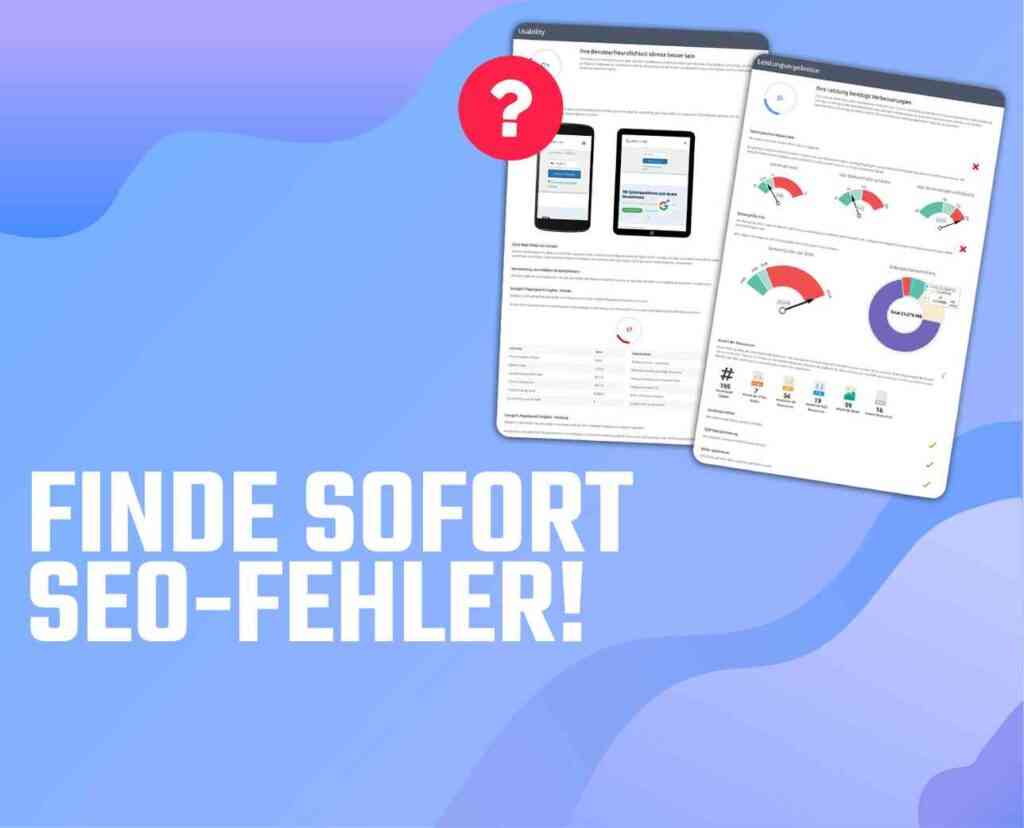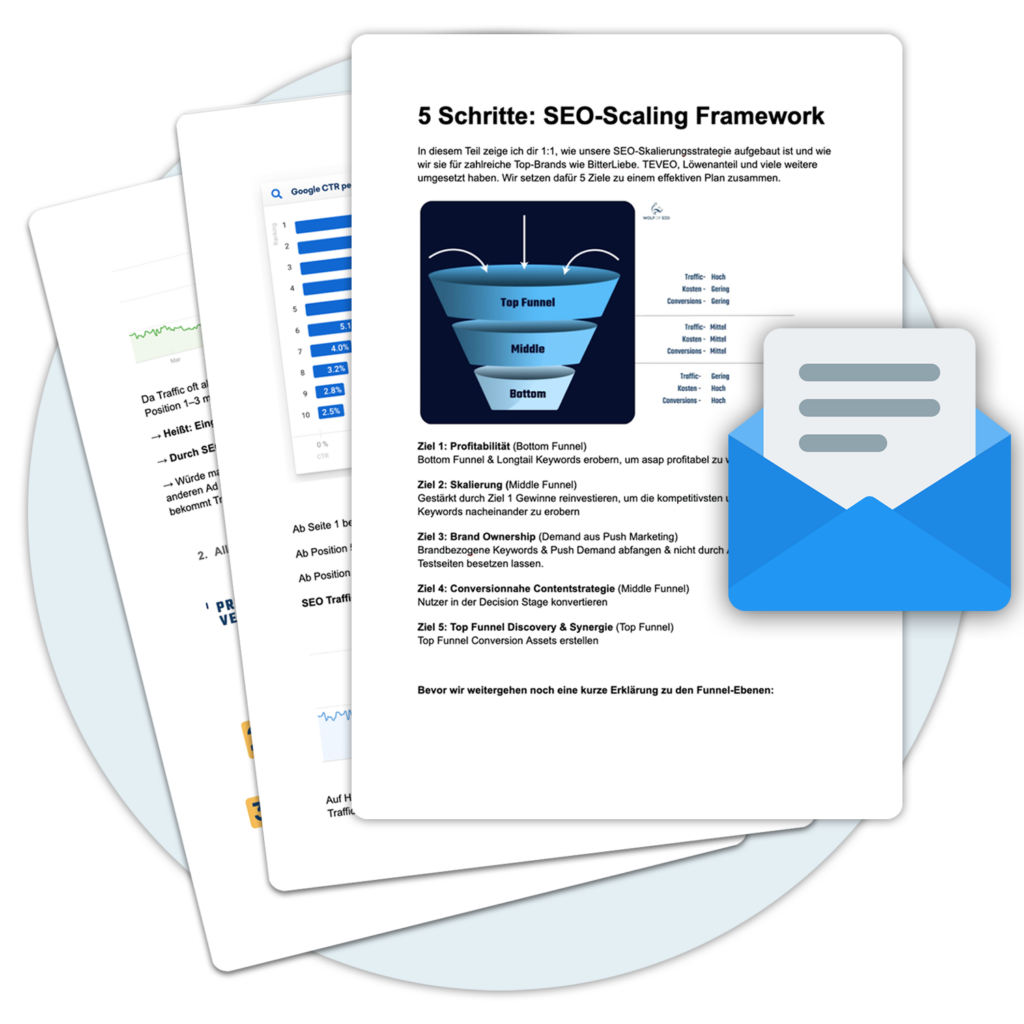Introduction to Bridge Pages
Bridge sidesalso known as bridge pages, are an essential tool in the Online Marketing, insbesondere im Bereich der Suchmaschinenoptimierung (SEO). Sie dienen dazu, Besucher gezielt von einer Webseite zu einer anderen zu leiten oder eine bestimmte Aktion auszuführen, wie beispielsweise den Kauf eines Produkts oder das Ausfüllen eines Formulars.
With Bridge sides companies can optimize their online presence and increase their conversion rates. They offer a perfect opportunity to direct visitors directly to the most relevant content or offers without them having to click through a multitude of pages.
The purpose of a bridge page is to provide users with a seamless transition from one web page to the next while encouraging the desired action. To achieve this, it is important that Bridge sides are convincingly designed and offer users clear added value.
Definition of bridge sides
A bridge page, also known as a bridge page, is a special type of website that serves as a link between different online content. Its aim is to guide the user from one page to another, for example from an ad to a landing page or from a category to a product.
Bridge sides are often used in marketing campaigns to promote targeted actions or conversions. They provide a seamless transition experience and allow users to reach the desired destination quickly and easily.
Bridge sides can have different formats, including informative pages, transactional pages and navigation pages. The type of bridge page depends on the specific goals and needs of the company or marketing activity.
Important for the creation of Bridge sides is to convey a clear message and offer users added value. It is also crucial that the site is search engine friendly and complies with search engine guidelines in order to achieve good visibility in search results.
Advantages of bridge sides
With Bridge sides companies can achieve a variety of benefits. These special landing pages serve as a "bridge" to direct visitors from one source to another. Here are some of the key benefits of Bridge sides:
- They increase the conversion rate as they present visitors with relevant information and offers.
- Bridge sides enable targeted targeting, as they can address specific target groups.
- They improve the user experience by providing relevant content and products.
- Bridge sides can help reduce the number of bounces by keeping visitors on the website.
- They enable companies to generate targeted sales and leads.
Types of bridge sides
There are several types of Bridge sideswhich have different characteristics depending on the objective and purpose. Each type of bridge page has its own characteristics and can be used in different marketing strategies. Here are some types of Bridge sides:
Informative bridge pages
Informative Bridge sides offer visitors relevant and useful information on a specific topic. They serve to inform readers and provide them with valuable content. This type of Bridge sides can be used, for example, in Content-Marketing campaigns can be used to address potential customers and show them the benefits of a product or service.
Transactional bridge pages
Transactional Bridge sides are designed to enable visitors to perform a specific action or transaction. They lead the user directly to a purchase or registration. This type of Bridge sides is often used in E-commerce-websites to provide users with a seamless transition to the transaction.
Navigation bridge pages
NavigationBridge sides are used to provide visitors with simple and intuitive navigation on a website. They contain links to different pages and sections of a website so that users can easily access the desired information. NavigationBridge sides are particularly helpful if a website has many subpages or contains complex content.
Informative bridge pages
Informative Bridge sides are a kind of Bridge sideswhich aim to provide users with relevant and useful information. They serve as a link between the search results and the actual target pages.
This type of Bridge sides can be particularly helpful when users are looking for specific information and the target website does not provide this information directly on the homepage or other main pages. Informative Bridge sides can serve as an intermediate station in such cases to present users with the desired information.
An important aspect in the design of informative Bridge sides is the Relevance and quality of the information provided. It is important to ensure that the content on the bridge page meets the needs and expectations of the users.
The following elements could be relevant for an effective informative bridge page:
- Headline: A meaningful headline that summarizes the theme of the bridge page.
- Contents: High-quality, relevant content that answers users' questions and offers them added value.
- Graphics or images: Visual elements can help to illustrate the information on the bridge page and make it more appealing.
- Call-to-Action: A clear call to action that shows users how to get to the actual landing page.
It is important to note that informative Bridge sides should be designed ethically and transparently. Users should be able to clearly recognize that they are on a bridge page and that this serves as an intermediate step to lead them to the desired information.
Transactional bridge pages
A transactional bridge page, also known as a "conversion bridge page", is a specific type of bridge page that aims to get the visitor to take a specific action, such as completing a purchase or filling out a form. Here are some key features of a transactional bridge page:
- Clear call to action: A transactional bridge page should contain a clear and unambiguous call to action that motivates the visitor to perform the desired action. For example, this could be a button that says "Buy now" or "Register now".
- Focus on the benefits: To encourage the visitor to take action, the transactional bridge page should emphasize the benefits of the offer. It is important to show the visitor how they can benefit from the action, for example by solving a problem or achieving a specific goal.
- Trustworthiness and credibility: Since visitors on transactional Bridge sides When customers often have to disclose personal information or make a purchase, it is important to build trust. This can be achieved through customer reviews, testimonials or security certificates.
- Easy navigation: A transactional bridge page should have simple and intuitive navigation so that the visitor can easily perform the desired action. Superfluous links or distractions should be avoided.
- Responsive Design: As more and more people use mobile devices to shop online or fill out forms, it's important that transactional Bridge sides are optimized for different screen sizes. The design should adapt automatically and offer a good user experience on all devices.
Navigation bridge pages
The navigationBridge sides are a special type of Bridge sideswhich are often used in the navigation of a website. They are used to provide visitors with an optimized user experience and lead them to a specific target page.
With navigationBridge sides website operators can improve the navigation of their website and help visitors to find the information or products they are looking for quickly and easily. These pages can act as a link between different areas or categories of a website and help visitors find their way more quickly.
An effective navigation bridge page should contain clear and well-structured links that allow visitors to easily navigate to other relevant pages. It should also be visually appealing and offer intuitive user guidance.
Another advantage of navigationBridge sides is that they are search engine friendly and can improve the visibility of the website in search results. By linking relevant pages together and creating a clear Navigation structure they make it easier for search engines to index and understand the content of the website.
Overall, navigationBridge sides an effective tool to improve the user experience, optimize website navigation and increase visibility in search engines.
How to create a convincing bridge page
To create a convincing bridge page, you should follow the steps below:
- Identify your goal: Before you start creating a bridge page, you need to clearly define what your goal is. For example, do you want to inform the user about a specific product or should they be directed to an action, such as a purchase or registration? The goal of the bridge page should be the focus and all content should be geared towards it.
- Provide relevant information: A compelling bridge page should provide relevant information to help users make a purchase decision. Make sure that the content on the page is appealing, well-structured and easy to understand. Important keywords should be emphasized in headings and text sections.
- Insert a clear call to action: In order for users to perform the desired action on your bridge page, you must place a clearly formulated call to action. This can be a link to a product page or a registration form, for example. The call to action should be clearly visible and conspicuously placed.
- Use responsive design: Make sure that your bridge page is optimized for different devices. In the age of mobile use, it is important that your site is displayed well on desktop computers as well as on smartphones and tablets. A responsive design ensures an optimal user experience on all devices.
- Test and optimize: Track the performance of your bridge page using analytics tools to measure success and identify areas for improvement. Test different versions of the site to find out which works best. Through continuous optimization, you can constantly improve your bridge page and achieve the desired results.
SEO and bridge pages
Bridge sides are not only a useful marketing tool for increasing conversion rates, but also an important part of search engine optimization. Targeted optimizations can Bridge sides help your website rank better in search results and get more organic traffic. Traffic to generate.
In the creation of Bridge sides it is important to observe the guidelines of the search engines. Google for example, has clear recommendations and rules for the use of Bridge sides to avoid abusive practices. It is essential to familiarize yourself with these guidelines to ensure that your Bridge sides comply with search engine standards.
Successful optimization of Bridge sides for SEO requires a comprehensive Keyword-research. Through the selection of relevant Keywords you can tailor your bridge page to the needs of your target audience and ensure that it appears in search results when potential customers search for related terms.
Another important aspect of the SEO optimization of Bridge sides is the internal linking. By linking your Bridge sides with other relevant content on your website, you can not only improve the user experience, but also the Relevance of your site for search engines.
To get your Bridge sides even more attractive for search engines, you can integrate additional elements, such as visual contentthat arouse the interest of users, or Testimonials and Customer experiencethat build trust.
With a well-optimized bridge side, you can optimize your Online Marketing-This can effectively support your goals and improve the visibility of your website in the search results. Nevertheless, it is important to always be aware of current developments and changes in relation to Bridge sides and their influence on SEO in order to achieve the best results.
Bridge pages and search engine guidelines
In the creation of Bridge sides it is important to follow the search engine guidelines to ensure that the pages are properly recognized by search engines such as Google. indexed can be made. If Bridge sides violate these guidelines, there is a risk that the site will be excluded from search results or even fined.
A frequent violation of the guidelines is the use of misleading or manipulative content on Bridge sides. Search engines expect that Bridge sides provide relevant and valuable information for users. It is therefore important to Content on the Bridge sides high quality and user-friendly design.
Another important point in complying with the guidelines is the correct use of redirects. If Bridge sides redirects to other pages, these redirects must be configured correctly in order to ensure the Crawling- and indexing process of the search engines.
Compliance with search engine guidelines is essential to ensure that Bridge sides can be successfully integrated into the marketing concept. By you follow these guidelines, you can achieve long-term SEO success and make your website more visible in search results.
Optimization of bridge pages for SEO
The optimization of Bridge sides for SEO is crucial to ensure that these pages are ranked well by search engines. indexed and ranked. Here are some proven methods to Bridge sides to optimize for SEO:
- More relevant Content: Make sure that the content on your bridge page is relevant and informative for users. Use relevant keywords to help search engine crawlers better understand the content.
- Metadata Optimize: Optimize the meta title and the Meta description your bridge page to achieve a high click-through rate in the search results. Also use relevant keywords.
- Fast loading time: A fast loading time is an important factor for SEO. Optimize your bridge page by compressing images and videos, cleaning up the code and choosing a reliable hosting solution.
- Internal linking: Use relevant internal links on your bridge page to improve the user experience and help crawlers better understand the page.
- Mobile optimization: Make sure your bridge page is optimized for mobile devices. Google favors mobile-friendly pages and this can have a positive impact on your Ranking impact.
- Social signals: Use social media to promote your bridge site and Backlinks to get. Social signals can have a positive impact on your SEO.Ranking impact.
Conclusion: Bridge pages as a marketing tool
Bridge sides are an extremely effective marketing tool that helps companies to strengthen their online presence and increase their conversion rates. They offer an ideal opportunity to address specific target groups and convince potential customers.
A well-designed bridge page enables companies to present their products and services in a clear and convincing way. It can serve as a link between different marketing channels and guide the customer through the sales process in an effective and interesting way.
The use of high-quality content is crucial to arouse the interest of visitors and encourage them to take action. Clear and concise language, appealing images and videos as well as informative text are essential to ensure the success of a bridge page.
It is important, targeted Traffic to the bridge site in order to reach the maximum number of potential customers. This can be achieved through search engine optimization (SEO), social media marketing, paid advertising and other marketing strategies.
The future of Bridge sides looks very promising. With the steady growth of the online marketplace and the increasing importance of digital presence for companies Bridge sides expected to continue to play an important role in the Online Marketing play. However, it is important to always be aware of the latest search engine guidelines and ensure that the Bridge sides comply with best practices.
Best practice examples for bridge sites
The use of Bridge sides can be an effective strategy to minimize the Traffic on your website and increase your conversion rates. Here are some best practice examples that show how Bridge sides can be used effectively:
- Relevant content: A successful bridge page should contain high-quality and relevant content that piques visitors' interest and encourages them to continue navigating your website.
- Clear call-to-actions: It's important to place clear calls to action on your bridge page that encourage visitors to take the desired action, whether that's making a purchase, signing up or contacting you.
- Clear navigation: User-friendly navigation is crucial to make it easier for visitors to find relevant information. Use intuitive menus and buttons to optimize navigation on your bridge page.
- Optimized for mobile devices: Make sure that your Bridge sides are optimized for display on mobile devices. Mobile users make up an increasingly large proportion of internet users and it is important to take their needs and habits into account.
By following these best practice tips, you can improve your Bridge sides and ensure that they are effective in boosting your website performance.Traffic and conversions.
The future of bridge sides
The future of Bridge sides looks promising, as they are an effective marketing tool and continue to play an important role in the Online Marketing will play. As online advertising and marketing become more and more complex Bridge sides a simple and cost-effective way to achieve targeted Traffic to a specific target or sales page.
Some interesting developments and trends in relation to Bridge sides:
- Personalization: Bridge sides are increasingly personalized in order to better address visitors and Relevance to increase. This can be achieved by using dynamic content or different versions of the bridge page for different target groups.
- Mobile optimization: With the increasing number of users accessing the Internet via mobile devices, the number of Bridge sides must also be increasingly adapted for mobile optimization. This includes fast loading times and a responsive design.
- Data protection and legal requirements: Due to the constantly growing legal requirements in the Online Marketing must also Bridge sides comply with data protection regulations. This means that users must be informed transparently about the data collected and how it is used.
- Integration of artificial intelligence: Through the integration of artificial intelligence Bridge sides can be tailored even more specifically to the individual needs of users. For example, personalized recommendations or chatbots can be used to offer visitors additional added value.
Overall, it remains to be seen how Bridge sides will continue to develop in the future. But one thing is clear: they will be an important part of the Online Marketing and help companies to achieve their marketing goals effectively.
« Back to Glossary Index





